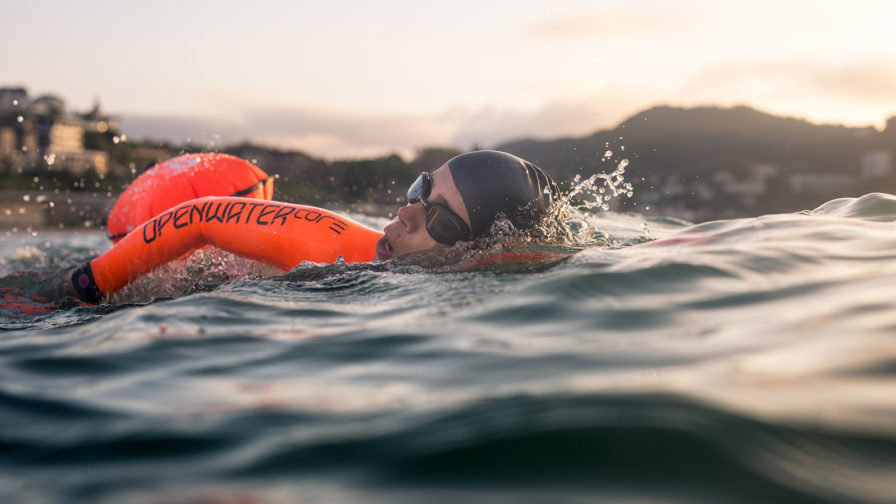Swim Buddy
Bring a friend with you. The golden rule is to not swim alone. Your friend doesn’t have to get into the sea with you, but someone needs to be able to keep an eye on you! It’s the best way to prepare you for a safe and enjoyable experience.
Check The Weather/ Sea Forecast
Check the weather and sea conditions before planning a trip on the open water. If you plan to be out for a long time check regularly as the conditions can change very quickly. If you have made the effort to get to the sea and it’s looking rough you maybe tempted to brave it. Don’t. If in doubt don’t go out. You can avoid the temptation by checking the forecast before you leave.
Float To Live
Float to live. Three words to remember which are potentially life saving. If you fall into cold water your body may go into a state of shock. You must try and fight your instincts to thrash about or swim. Lean back, using your arms and legs to stay afloat. Control your breathing, then call or signal for help.
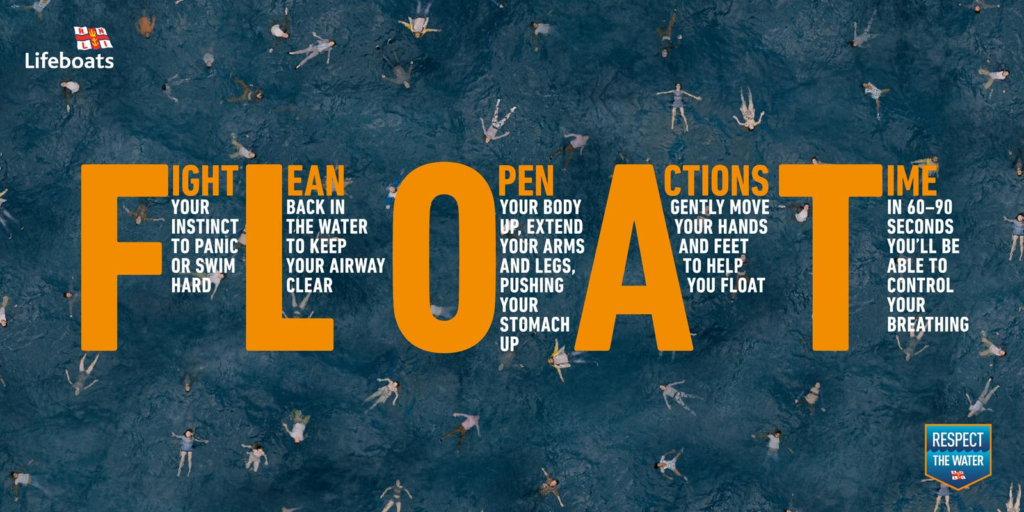
Rip Tides
The majority of Lifeguard incidents involve Rip tides. They can be very hard to spot, even to an experienced swimmer. The best way to avoid them would be to swim inside the red and yellow flags pitched on a lifeguarded beach.
Should you encounter yourself in the middle of one panic can set in and you may instinctively try to swim against it. You must fight this urge. It can be futile to swim against the pull of the current if it’s strong. The rip tide can flow at a quicker speed than an Olympic swimmer and you will exhaust yourself.
Raise your hand and shout for help if possible. If you can stand, wade yourself back rather than swim. If you’re in too deep you must swim parallel to the shore until you manage to free yourself.
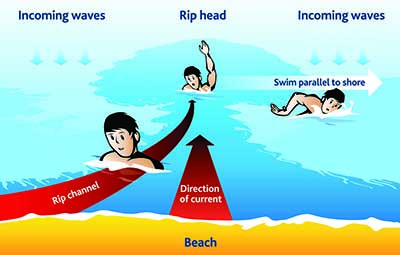
Slow + Steady
When going for a swim slowly introduce yourself to the sea so your body can adjust to the temperature. Jumping in could make your body go into shock. Once you’re waist deep splash some water into your face and upper body. Your breathing may start to change as you adapt so walk or breaststroke (keeping your head above the water) parallel to the shore until it gets under control.
Spot Hypothermia
Hypothermia is not related to cold water shock and is a different danger to be aware of. It seeps in over time as your body gradually gets colder, and drops below 35C. Symptoms to be aware of include; Shivering, Slurred speech, confusion and irregular breathing.
If you notice these symptoms in yourself or another swimmer it’s time to get to shore and get warm, dry and change into some fresh clothes. Drink a hot beverage and some hot food to help warm the body from the inside out and give it some energy. Should symptoms worsen or don’t improve seek medical attention.
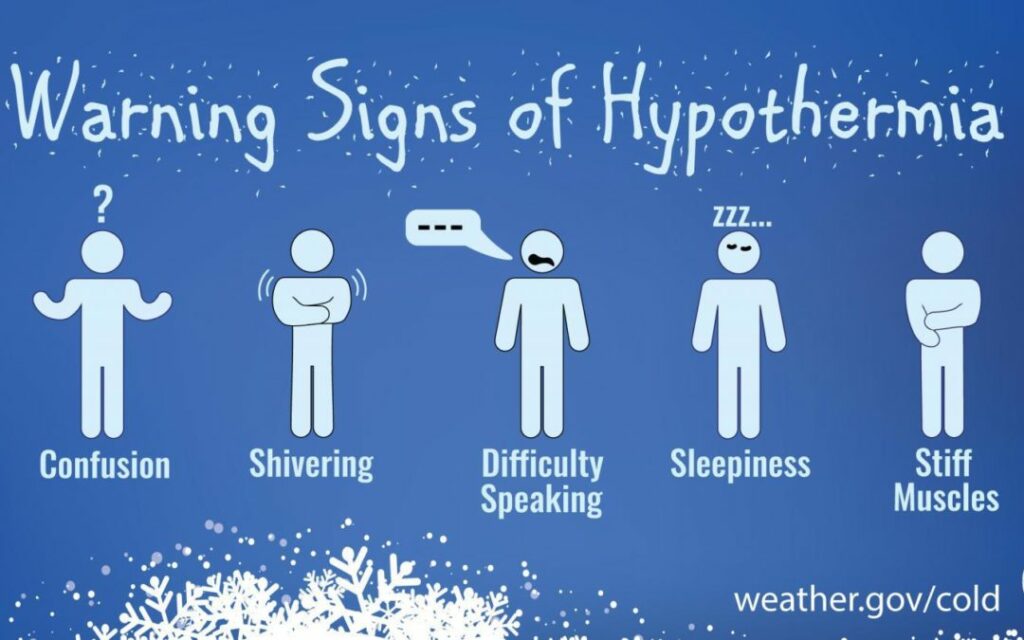
Wear a Wetsuit
A wetsuit is vital to keep you warm and more buoyant in the sea. Irish waters tend to be cold all year round so they’re an important companion. The wetsuit will give you some protection against the bitterly cold elements and may help you avoid cold water shock. Some are also designed to be highly visible so you can be seen easily. The Orca OpenWater SW (smart wetsuit) is the optimum wetsuit for open water safety currently on the market.
As well as being warm, buoyant and highly visible – it also includes a SMART ID system making you and your contacts instantly identifiable in the event of accident or emergency. It also includes a Resttube ready connector which can connect to a swim buoy for extra visibility and buoyancy.

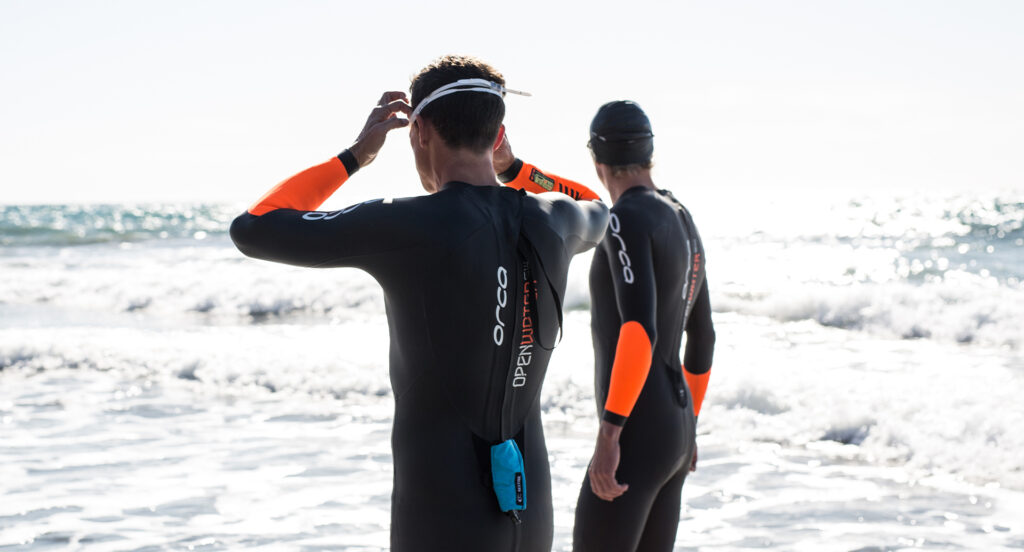
Warm Clothes + Food/ Drink
Once getting out of the water it’s wise to try and get warm and dry as soon as possible. Your core temperature has likely dropped if you have spent a significant amount of time offshore. Getting out of the sea and into a cosy changing robe is not just comforting but also practical! Add some hot food and drink and it’s the perfect remedy!
Useful Accessories
- Brightly Coloured Swim Cap: Help stay visible with an eye catching swim cap.
- Goggles: Invest in a pair of good quality goggles to ensure you can see where you’re going.
- Ear Plugs: If you swim in the open water regularly you could develop Surfers Ear. Ear plugs will prevent this from happening. SurfEars are fantastic as they allow sound in but keep water out!
- Safety Buoy: Similar to the Tow Float, but also includes a compartment to keep belongings in.
- Changing Robe: Change into your dry clothes with ease. Also gives you instant protection from the elements and helps get your body temperature back up to where it wants to be.
- Surf Lock: Keep your car keys secured whilst going for a dip
- Life Jacket: Handy for those who want to enjoy being in the sea but not necessarily looking to go for a swim.
Useful Numbers + Apps
- In a coastal emergency, call 999 or 112 for the Coast Guard.
- Check Met Éireann prior to your swim to ensure the weather is suitable
- The Safe TRX App tracks your phone and alerts emergency contacts should you not return at your scheduled time

